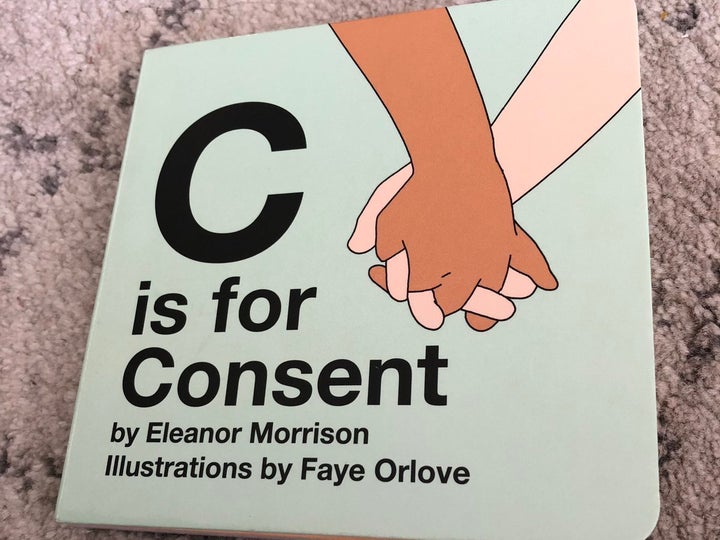If your child doesn’t want to give you a hug or a kiss, don’t take it personally – it’s up to them, as an innovative picture book aimed at babies, toddlers and children aims to show.
Starting a conversation about why it’s okay to say no to physical contact, ‘C Is For Consent’ dispenses a series of important lessons about setting boundaries, and why it’s important children feel able to have their say from an early age.

Published in April 2018, the book came to Twitter’s attention in October when Zoé Samudzi, whose nephew was gifted the book, shared pictures of its cover and blurb, remarking: “They’re starting my 11 month old nephew early”.
Funded via a Kickstarter campaign, the illustrated story follows Finn, a young boy who navigates a family gathering, and people’s expectations of physical contact – specifically when to offer and receive it. In one scenario, his grandma goes in for a hug, but Finn, who “isn’t in the mood”, is reminded by his dad that he doesn’t have to give hugs if he doesn’t want to.
At the end of the book, Finn applies the lessons he learned at the party and gets consent before holding his best friend’s hand.
On the book’s message, Samudzi told HuffPost UK that she felt it was important for boundary-setting. “Forcing children to give hugs or allow themselves to be hugged or kissed perpetuates negative ideas that our bodies do not belong to us.”
Talking about future interactions with her nephew, she said on Twitter: “I’m sure if I ask him for a hug and he says no and gives me a high five instead I’ll be sad, but it’s important that he never feels coerced into hugging me.”
The book’s author, Eleanor Morrison, said that she wrote the book during her child’s naps. In an FAQs section on the campaign website, Morrison busted popular myths about consent and how it applies to children.
“Good manners should not be defined by a willingness to engage in unwanted physical contact,” she wrote.
Morrison, who said she was “tired of the endless waves of sexual assault news”, felt that lessons around consent to physical contact in childhood were linked to sexual consent later in life.
She told HuffPost UK: “As the mother of a young son, the #MeToo movement hit me deep in my gut. It is my responsibility to raise my little boy to respect body boundaries, and I wanted to give him a book to support that lesson. I looked around and could only find books on consent that felt appropriate for older children. I didn’t want to wait to start laying that foundation with my child, so I wrote my own book.”
Morrison also emphasised the importance of viewing consent as a social practice that extended beyond sex. “There are countless ways the concept of consent is woven through daily life, even from a young age.”
Samudzi’s tweet about the book prompted adults to share their own thoughts on boundary-setting in early life, with some parents explaining how they approach the issue with their children.
Readers have praised the book not just for its message, but also for its all-round inclusivity, with illustrations by Faye Orlove representing different family structures, sexualities, ethnicities and disabilities.
Although it’s aimed at “ages 0+”, the book is a reminder that content aimed at children can be challenging and create debate and learning opportunities for adults, too. Morrison said: “I wrote it for the next generation, but it’s just as much for parents and caregivers. It’s really on us to help guide our kids. Hopefully this book can be a useful tool for those unsure how to have this necessary conversation.”
Twitter user @judeinlondon2 remarked that they’re coming to terms with the book’s ultimate message, saying it took them a while to realise that their child saying “no” to a hug a was a good thing.
Morrison says it best: “If your child pulls away from your demonstration of affection, that should be okay. Whether interacting with a family member or distant acquaintance, children should receive the clear message that what happens to their bodies is their personal choice.”
“That lesson is crucial on its own, but also to understanding that it is other people’s decision what happens to their bodies.”